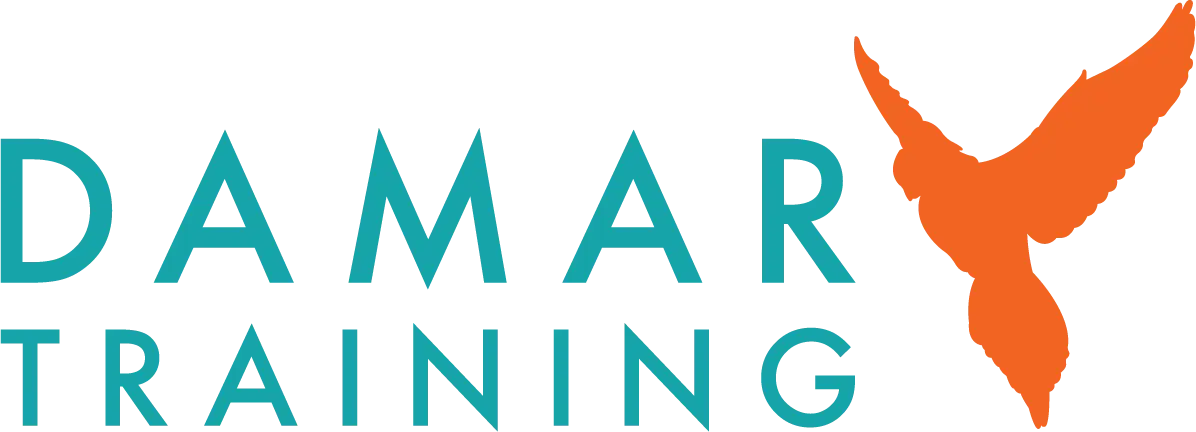‘Off-the-job’ training time is often seen as one of the most challenging aspects of apprenticeships. At Damar, we disagree. Off-the-job training is one of the biggest advantages of apprenticeships and the way in which we structure off-the-job ensures that it delivers the greatest possible benefit to employers and apprentices.
Off-the-job training can be defined quite simply as:
“The time an apprentice spends on activities where they are learning new knowledge, skills or behaviours relevant to the apprenticeship standard. off-the-job takes place during normal contracted working hours.”
The amount of off-the-job training for each standard that Damar delivers is set out in our training plans. All our apprenticeships plan for more than the off-the-job legal minimum.
Why is high quality off-the-job training so valuable?
When you invest in an apprenticeship, whether for a new or an existing colleague, it is a vote of confidence in the individual. By making the investment, you are effectively saying:
“I believe in you and want you to have the chance to develop and thrive in our organisation. So much so that I am going to pay you to spend a significant amount of your working hours in training and am confident that, as your skills develop, our investment in you will be repaid.”
Off-the-job is there because it gives your apprentice time to learn the skills they need to be fully competent in their job. Damar and our employer partners want apprentices to go beyond minimum competency requirements and excel – meeting their and your goals as well as the distinction criteria for the apprenticeship.
To be eligible for an apprenticeship, an apprentice must have a significant skills gap compared with what the apprenticeship standard requires. By law, this means a skills gap that big enough for the apprentice to need more than 187 hours of off-the-job training (as set out in the government’s 2025/26 funding rules). All apprenticeships have a minimum duration of eight months. All Damar apprenticeships are longer than eight months (ranging from 15 months to 3 years) and have a higher off-the-job requirement than this. This is because off-the-job training is crucial in delivering a high-quality apprenticeship outcomes.
We have designed all our apprenticeships with enough carefully planned off-the-job training to ensure that apprentices have the best possible chance of success and exceed the minimum off-the-job requirements. Everyone is different and some apprentices may require a little more (or less) time than we expect at the outset. This flexibility is another benefit of Damar apprenticeships compared with classroom learning.
How Damar ensure off-the-job is effective and easy to manage
The amount of off-the-job varies by programme and is set out in the training plan, but our off-the-job is based around a teaching model known as “flipped learning”, where apprentices study independently but consolidate and discuss their learning at group and 1:1 sessions. This is more efficient and flexible than classroom-based delivery.
Damar apprenticeships in the main run to a 6-weekly module cycle. Each module has a similar structure:
- Pre-work: Usually, reading or video content relating to the module.
- Main learning: Self-directed, interactive content on our online learning platform.
- Group coaching session: Apprentices come with their questions, discuss their learning with peers and prepare themselves for the final part of the module, which is to complete individual activity.
- Individual learning activity: An activity brief will be provided for the apprentice as introduced in the group coaching session. The student will work through the activity brief, building their evidence to support the portfolio and end point assessment. Importantly, this final activity allows the apprentice to embed and contextualise their learning.
- 1:1 Coaching visit: Every six weeks, an opportunity to review progress and discuss personal development with the apprentice.
- Review meeting: Takes place with the apprentice and their supervisor every 12 weeks, immediately after a coaching visit. Work completed and feedback are reviewed and, if it is to the right standard, the module will be signed off.
For some of our apprenticeships with higher level technical knowledge content we also have live workshops, delivered by sector experts. This is complemented by an additional knowledge training plan and supporting activity. Apprentices are tasked with completing their knowledge learning prior to the relevant workshop.
Planning off-the-job training
Our delivery model is designed to give you and your apprentice as much flexibility as possible. We simply ask employers to ring-fence blocks of time in the apprentice’s working week for their off-the-job training. This allows you to plan for the majority of off-the-job to take place at times that work best for your organisation.
Group coaching visits and workshops are diarised well in advance and apprentices treat these as they would any other business meeting. Apprentices take responsibility for booking their coaching visits and review meetings in accordance with their training plan and ensuring their supervisor is available for review meetings.
As with all activities, your apprentice will sometimes need a little more (or less) time than planned and, sometimes, other urgent work may mean that off-the-job needs to be rescheduled. This doesn’t matter so long as the apprentice is able to complete their work and that they are recording, on average, that the necessary off-the-job is taking place.
Most Damar apprentices also undertake and record activities at work that are outside the Damar training plan but which count as off-the-job. If they meet the definition above, things like in-house training, mentoring and internal coaching can all be included as off-the-job training. In general, the more off-the-job that your apprentice can undertake, the more successful your apprentice will be!
Find out more
We have a range of other insights blogs which can offer you further information:
- How long do apprenticeships last?
- Apprenticeships for SMEs
- The apprenticeship levy
- Changes in the 2025/26 apprenticeship funding rules.
If you have further questions or would like to talk to us about apprenticeships, please fill in our form and one of our account managers will get back to you.

